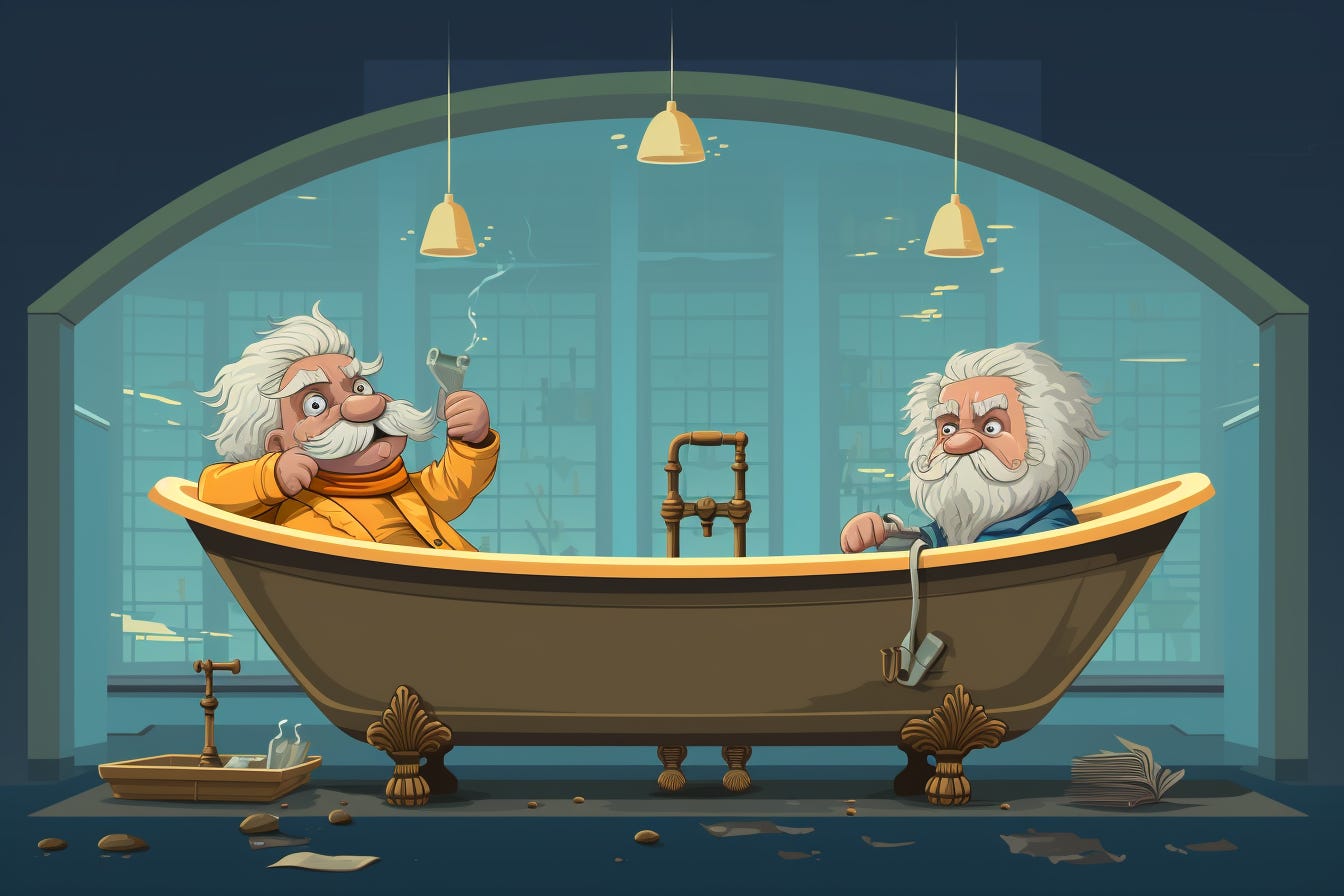12 tools that will make you a genius innovator
No bathtub required.
Einstein and Archimedes: Pioneering Innovations in the Bathtub
The tales of two remarkable minds, Einstein and Archimedes, often intertwine with the innovative power of the bathtub. Legends tell us that while immersed in the soothing waters, these brilliant thinkers experienced groundbreaking "Eureka!" moments that revolutionized their respective fields.
Archimedes, a genius of ancient Greece, reportedly had his moment of insight while submerging himself in a bath. As he observed the water level rising due to his presence, he suddenly understood the principle of buoyancy. In a burst of inspiration, he leaped out of the tub, exclaiming "Eureka!" which translates to "I have found it!" Archimedes' discovery not only explained why objects float or sink but also laid the foundation for hydrostatics and other scientific advancements.
Centuries later, Albert Einstein, the iconic physicist, is said to have found himself grappling with the complexities of his theory of relativity. As he soaked in his bathtub, staring at the ceiling, he contemplated the mysterious nature of light and time. In a moment of clarity, he realized that the path to enlightenment lay in understanding the relationships between space, time, and gravity. This realization led to his formulation of the theory of relativity, which transformed our understanding of the cosmos.
While the veracity of these bathtub stories may be debated, they serve as vivid reminders of the unexpected places where innovation can strike. The bath, a seemingly mundane sanctuary, became the backdrop for profound insights that altered the course of human knowledge. Whether or not these anecdotes are entirely true, they embody the essence of creativity: that ideas can emerge from the most unlikely moments, even in the depths of relaxation.
Luckily, you don’t need a bathtub to be a top notch innovator. Here are 12 innovation helpers.
Find your creative flow
Wake up early. Or stay up late. Drink a beer or a coffee. Go outside. Lock yourself in a cabin. Whatever works for you.
Carry a notepad or a small book at all times.
Richard Branson mentioned that he carries the same type of notepads that schoolchildren use. He keeps them all.
Yes, No and Po
One of my favourites. "Yes, No and Po" by Edward de Bono introduces 'Po' as a third option in decision-making, encouraging creative alternatives beyond traditional yes or no choices.
Sakoku
Sakoku is interesting. Sakoku was “Japan under isolation”. Isolation nurtured unique ideas within Japan, shielded from external influences, fostering distinct cultural and artistic innovations. You can “Sakoku” yourself.
Brain writing.
Brainwriting encourages diverse idea contributions from team members, fostering a collaborative and inclusive approach to innovation. The difference between brain writing and brainstorming is that the ideas from the lowest ranked or quietest person in the room will get a fair treatment in the process.
Design Thinking
Design thinking fosters creativity by emphasizing empathy, iterative problem-solving, and user-centered innovation, yielding novel and effective solutions. I find it is quite important to be the least knowledgable person in the room. What I mean by that is by having high caliber, and diverse, people work through a problem with design thinking, you are going to get great results.
The SCAMPER technique
SCAMPER technique sparks creative ideas by prompting alterations to existing concepts, pushing boundaries of innovation. SCAMPER prompts us to break free from conventional thinking by asking questions about how we can Substitute, Combine, Adapt, Modify, Put to another use, Eliminate, or Reverse elements of a concept.
Look at patents, study them widely and deeply.
It is theorised that patents hold a significant fraction of the entire knowledge-base of mankind; Potentially encompassing around 80-90% of innovations and technological advancements.
You can start by searching Google Patents.
TRIZ
Another favorite of mine. TRIZ (Russian acronym for ‘Theory For Inventive Problem Solving’) is a problem-solving method that taps into inventive principles and patterns to solve complex challenges across various domains. I used TRIZ when I designed a toy car using ChatGPT and Midjourney.
Avoid Multitasking
Multitasking divides focus, hindering deep thinking needed for creative breakthroughs. Quality suffers as attention spreads thin.
The Concept Fan method
The Concept Fan method encourages divergent thinking, allowing you to consider multiple dimensions, applications, and adaptations of the initial idea.
Morphological Analysis
Morphological Analysis sparks creativity by dissecting challenges into parameters, allowing innovative solutions to emerge through unique combinations.
(Bonus!) Subscribe to my newsletter and twitter/X.


